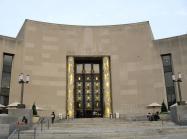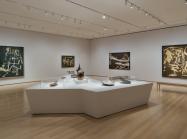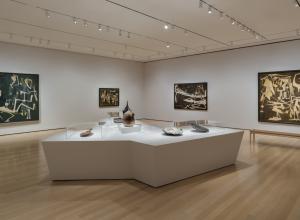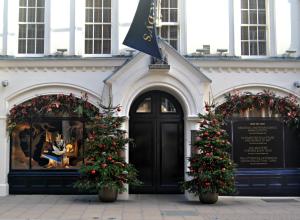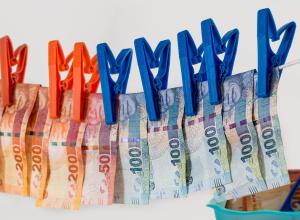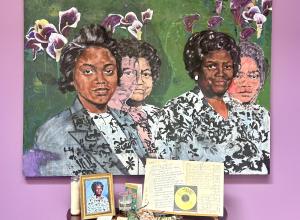The last six months have been a busy and exciting time at the Pompeii Archaeological park in Italy. Excavations across the famous buried city have provided archaeologists with mounds of exhilarating new finds and information to analyze. Discoveries have ranged from single objects to entire homes, but each one has played a critical role in completing our picture of life in the ancient Roman city. Here, Art & Object is reporting on some of the most consequential and tantalizing finds made so far this year by excavators at the park.

An incredibly rare and intriguing fresco was uncovered in Region IX of the park back in February. Known as a megalography, the nearly life-size frieze runs across three walls of a large banquet hall and depicts moments from a Dionysian procession. The procession is resplendent with lively figures against a red backdrop, including Dionysus himself; his followers, the bacchantes; various satyrs; and, at the center of the back wall, a woman accompanied by the figure Silenus.
Silenus holds a torch which indicates that the woman next to him is in the role of an initiate about to embark on a nocturnal ritual into the mysteries of Dionysus who, among his many roles, also represented the processes of death and rebirth. Those who engaged in his mysteries were seeking the same destiny.
This find comes over 100 years after the famous Villa of the Mysteries was discovered at the site and adds an incredibly welcome example to our limited corpus of imagery about mystery cults, the inner workings of which were only known by those initiated into them. The frieze has been stylistically dated to around 40-30 BCE, predating the city’s demise by over a century.
Image: The center wall of the Dionysian Processional fresco from the recently uncovered House of Thiasus. The discovery of this megalography comes nearly 100 years after the other mystery cult fresco at the Villa of the Mysteries.

Children and childhood in ancient Rome have traditionally proved to be a difficult topic to study due a paucity of evidence relative to adult individuals. However, new evidence of some of Pompeii’s youngest inhabitants is helping to fill in the blanks. On the walls of a back courtyard in the House of the Colonnaded Cenaculum, recent excavations have uncovered charcoal drawings of gladiators and hunters made by kids. Estimated to have been drawn by children between the ages of five and seven, the images are evidence that children in Rome, even the very young, were exposed to– and absorbed to the point of recreation– extreme forms of violence.
This discovery can be compared to how children today consume media laced with extreme violence, such as movies and video games. However, researchers have pointed out that the reality of the violences does not compare: video game characters respawn, gladiators did not. The Pompeii Archaeological Park has partnered with psychologists at the University of Naples Federico II to better understand the mental and emotional effects of such exposures on young children.
Image: Charcoal drawings of gladiators and animals found recently at Pompeii.

In April of this year, archaeologists made a disturbing discovery inside one Pompeiian home that truly exemplified the tragic nature of the disaster which struck the city in 79 CE. The House of Helle and Phrixus, modestly sized by Pompeii standards, belonged to a middle to upper-middle class family and consisted of an atrium, a bedroom, and a richly decorated banquet hall with finely painted frescoes. Upon uncovering the bedroom, it quickly became clear to excavators that whoever lived in the house had made a desperate attempt at saving themselves during the volcanic eruption. The frame of a bed was found pushed up against the bedroom door to act as a barricade of sorts in order to keep out the destruction happening beyond.
Inevitably, the family’s efforts were in vain and the remains of four victims, including one child, were located within the room as excavations progressed. Archaeologists at the site believe that once the eruption began, lapilli (small volcanic stones) began filling the house through the roof opening in the atrium, and the family attempted to protect themselves in the closed bedroom with the entrance blocked. Of course, once the seismic shocks and pyroclastic flow began, there was no chance for survival for anyone who had not made it far away already.
Image: The plaster cast of a now deteriorated bed one Pompeiian family had used as a barricade against a door to save themselves from the eruption of Mount Vesuvius in 79 CE.
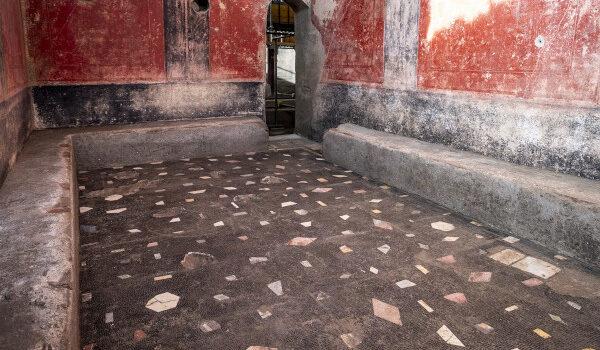
Among the many fascinating discoveries coming from Region IX at the park, a large bath complex was found earlier this year within what was once a private Pompeiian home. The bath is noteworthy within a private residence for its size and splendor with only a few other examples of such a thing existing at Pompeii. Consisting of a caldarium (hot water bath), tepidarium (warm water bath), frigidarium (cold water bath), and a changing room with benches, excavators estimate that up to 30 people could have used the complex at one time.
The frigidarium is noted as being particularly interesting for having a porticoed courtyard surrounding it. The bath complex in conjunction with the rest of the house showcases the owner’s elevated position in Pompeian society. Attached to the home’s banquet hall– where exquisite frescoes on a black background were also uncovered a few months prior– the two spaces give the sense that the owner was someone who needed to create a sumptuous space in which they could entertain and host many people at once to a high degree of luxury.
Image: The decorated changing room of the private bath complex found during recent excavations in Region IX of the Pompeii Archaeological Park.
Danielle Vander Horst
Dani is a freelance artist, writer, and a trained archaeologist. Her research specialty focuses on religion in the Roman Northwest, but her educational background encompasses more broadly Greek and Roman art, architecture, materiality, and history. She holds multiple degrees in Classics and Archaeology from the University of Rochester, Cornell University, and Duke University, and she is currently completing a PhD in History of Art & Archaeology at Cornell University.

